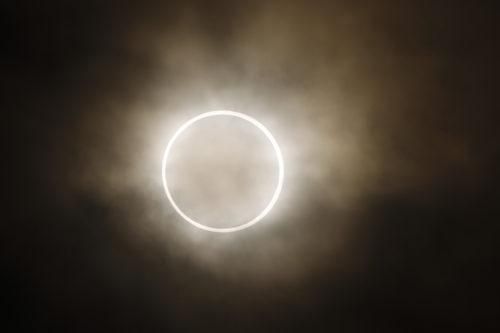Look up in 2023 for these don't miss events

Winter
The year begins with the Quadrantids in the early hours of January 4. This is one of the years most active meteor showers but much of this year's show will be spoiled by the nearly full moon except for a small window between moonset around 5:30 and 7:00 a.m. as the rising sun brightens the sky. These hours before sunrise are the best for meteor shower watching as the Earth turns into the path of dust and tiny rocks left behind by parent asteroid 2003 EH.
Astronomers are keeping a close watch on newly discovered Comet C/2022 E3 (ZTF). It has been brightening as it draws closer to the Sun. If that continues, the comet could be visible with the naked eye by mid to late January. That is a big if because the comet could break up at any point, especially as the Sun boils off ice, ejecting dust, the source of the brilliant tail and glowing comma around the comet.
Look low in the southwestern sky on January 22 for Venus and Jupiter beginning around 6:15 p.m.. Much brighter Venus will be on the left separated by less than 1/3º from Saturn. The pair will disappear below the horizon by 7 p.m. Also look for just a tiny sliver of the day old Moon near the horizon.
Mars will be separated in our skies by about 4 minutes or arc or 0.0667º on January 30 overnight into January 31. Best viewing will be around midnight when they are at their closest Observers from the Florida Georgia line south and westward to southern California will see an occultation as the Moon passes in front of Mars.
On March 1, look for the two brightest planets, Jupiter and Venus, to be separated by about 0.5º
Summer
As astronomical summer arrives on June 21 with the solstice, the Moon, Mars and Venus will also form a triangle in the night sky.
The first of four supermoons arrives on July 3. The next rises on August 1, followed September 30's moon, technically a blue supermoon. 2023's supermoons close out on October 29.
The Persied meteor shower peaks August 12 into the 13th. Only 10% of the waning crescent moon will be illuminated making meteors much easier to see.
On August 23, the bright star Antares will disappear behind the unlit half of the first quarter Moon beginning at 11 p.m. This lunar occultation ends about 30 minutes later as Antares reappears from the lit half of the Moon.
Autumn
The don't miss astronomical event of the year is the annular solar eclipse on October 14. Annular solar eclipses are those which occur when the Moon passes directly between the Earth and Sun, but at a point in the Moon's orbit when it is further away from Earth, preventing it from completely covering the Sun, leaving an annulus or "ring of fire", visible along a path stretching from Oregon through Texas. Here in NC we'll see a partial eclipse beginning at 11:56 a.m. The lower right third of the Sun will be blocked by the Moon at 1:20 p.m. and the show will be over by 2:46 p.m.
Astronomers also have December 2 circled on their calendars for a possible outburst of the normally very minor Andromedid meteor shower as debris from the break of up parent Biela's Comet reaches Earth.
Space Exploration
Tropospheric Emissions Monitoring of Pollution (TEMPo), Smithsonian Astrophysical Observatory (SAO)/NASA mission to measure North American air pollution from fires as well as human activity is planned for a launch later this month.

SpaceX Polaris Dawn mission will bring four paying customers to orbit aboard a SpaceX Dragon capsule in Earth. The mission is planned to fly "higher than any Dragon mission to date and endeavoring to reach the highest Earth orbit ever flown," according to the company. A first ever commercial spacewalk is also planned at an altitude 185 miles above the orbit of the International Space Station. Launch is planned for March 2023.

The JUpiter ICy moons Explorer (JUICE) probe will study the moons discovered by Galileo 400 years ago for clues about of how and where Jupiter formed, the researchers can obtain clues as to the origin of our solar system and the extrasolar planetary systems which continue to be discovered outside the solar system. Led by the European Space Agency in collaboration with NASA and the Japaneses Space Agency, JUICE is planned for launch in April to arrive at its Jovian destination by July 2031.

The Psyche mission will study a metal-rich asteroid orbiting the Sun between Mars and Jupiter. This asteroid offers a unique window into the metallic cores that lie unreachable within all rocky planets, including Earth. The spacecraft is powered by solar-electric propulsion and will also test a new laser communication technology that uses light in the near-infrared to communicate between a probe in deep space and Earth.

The seven year Osiris-Rex mission concludes with the delivery a sample of asteroid Bennu to Earth on Sept. 24, 2023. Entering the atmosphere at over 27,000 mph, the small capsule containing samples collected from asteroid Bennu in October 2020, will parachute down to the Utah desert on Sept. 24, 2023.

2023 will be a busy launch year as well with maiden flights of Arianespace's Ariane 6, Blue Origin's New Glenn, SpaceXs Starship and United Launch Alliance's Vulcan Centaur planned for 2023.
Other plans for 2023 include the first crewed flight of the Boeing Starliner capsule to the International Space Station, commercial payload delivery services to the Moon by Astrobiotic Technology and Intuitive Machines. Contracts will also be awarded for crew lunar landers and a new rover for astronauts to explore the surface. Launch is planned for October 1, 2023.










